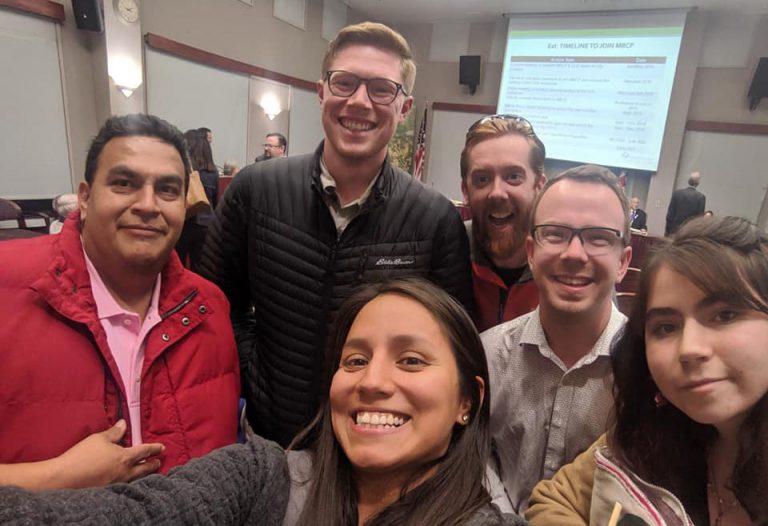Demystifying All-Electric Homes and Buildings
Come learn, ask questions, and be inspired.
All-electric buildings are healthy, safe, energy-efficient places to live, work, and play that cut greenhouse gas emissions significantly. What could be better?
California produces only about 10% of the natural gas that we use. We import the other 90%.
More than two-fifths of the state’s utility-scale electricity generation is fueled by natural gas. Our homes and buildings account for approximately 25% of statewide greenhouse gas emissions. About two-thirds of those emissions come from burning fossil fuels such as natural gas and propane for space heating, hot water, and cooking.

The pie chart at the right shows 2015 U.S. residential energy use percentages.
Click here for the source webpage by The National Academies of Sciences, Engineering, and Medicine.
I know what you are thinking.
Is it something along the lines of “I am not giving up my gas range.” or “I cannot afford to replace my natural gas furnace.” or “I don’t know if my office building is wired to be all-electric.”
I get it. I have natural gas appliances in my own home which also houses my office.
The thing is, we need to get off burning fossil fuels, now, not later.
The natural gas industry spends tens of millions of dollars each year trying to convince you and me that natural gas is clean and safe, but that is not actually the case.
Burning fossil fuels inside our homes, businesses, and schools are major sources of indoor air pollution that are linked to asthma and other respiratory illnesses. Natural gas is highly flammable and explosive. Its infrastructure is expensive and prone to leaking. Natural gas exploration and fracking destroys habitats, pollutes water, and endangers workers and the people who live near these dangerous operations.

Our children, grandchildren, nieces and nephews, the kids down the street, and future generations are counting on us to make decisions and take actions that will protect and heal the planet we all call home.
“It is our choices… that show what we truly are, far more than our abilities.”
—J. K. Rowling
Fortunately, decarbonized (fossil-fuel-free) homes and buildings are not some distant dream.
The 21st-century technology we need to run our homes and businesses with clean, renewable energy already exists. And we have experienced people in our communities who can help us electrify everything. As we do this, chances are, new careers and jobs will open up and contribute to the vitality of our local economy.
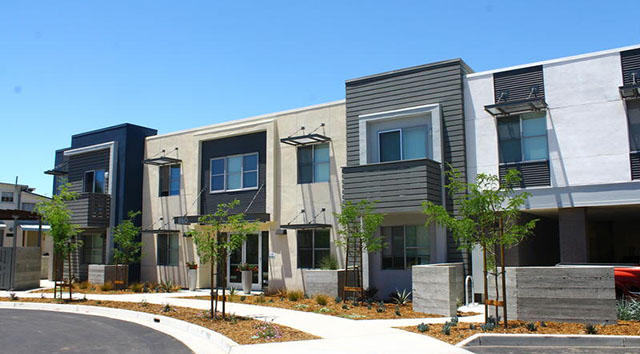
Okay, so now perhaps you are at least considering that all-electric homes and buildings are a good idea. But, you have questions and concerns. I do, too.
We are in luck.
On August 22, 2019, you, I, and anyone else that will be in the San Luis Obispo, CA area, has the opportunity to learn about decarbonized buildings, meet experts, ask questions, check out electric technologies, and enjoy the bounty of the SLO farmers market.
Earlier in the day, the Tri-County Regional Energy Network (3C-REN) is offering a free forum for architects, designers, engineers, builders, developers, energy consultants, and realtors about building electrification and energy codes. Click here to view the agenda or to register to attend the forum. If you have questions, contact Jon Griesser at jgriesser@co.slo.ca.us.
SLO Climate Solution Series III
Decarbonizing Our Future with Better Buildings is the third event in the SLO Climate Solution Series hosted by the SLO Climate Coalition. The series began with a kick-off celebration in April and the second event, in June, featured energy policy expert Hal Harvey, talking about climate action policies that actually work.
The 2-part SLO Climate Solution Series III event is taking place in downtown San Luis Obispo. The first part is a panel discussion followed by a building expo and cooking demonstration at the farmers market. Both events are free and open to the public. Click here for the event flyer.
Event Information
Panel Discussion – Why Electrify?
Date: Thursday, August 22, 2019
Time: 5:30-7:00 p.m.
Location: San Luis Obispo Library at 995 Palm St.
Decarbonized Building Expo
Date: Thursday, August 22, 2019
Time: 6:00-9:00 p.m.
Location: Morro St. and Higuera St. (SLO Farmers Market)
If you have any questions or need more information, please contact Mike Horgan at mike@horgandesignbuild.com.
Panel Discussion – Why Electrify?
I was excited to learn that Denise Dudley will be moderating our panel of experts. She is a wonderful speaker herself and has a way of keeping things on track without seeming to. I have not met the panelists yet, but I have been reading about their diverse backgrounds and experiences. These are good ingredients for a panel and should result in an informative and interesting discussion.
You will have an opportunity to ask questions, so please do. Come prepared to ask questions about things that matter to you in relation to decarbonized homes and buildings, electric appliances, building codes, new construction, retrofits, costs, etc.
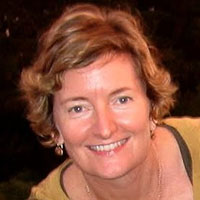
Bronwyn 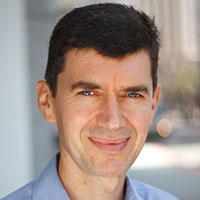
Pierre 
John 
Hannah 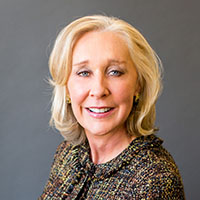
Denise
Bronwyn Barry
Bronwyn Barry is a registered architect. She organized and directed California’s first all-women construction crew for Habitat for Humanity before founding both Passive House California and the North American Passive House Network, where she currently serves as Board President.
Pierre Delforge
Pierre Delforge is a Senior Scientist at the Natural Resources Defense Council (NRDC). Pierre joined NRDC in 2010 after a 20-year career in the technology industry. At NRDC, he works on policies to decarbonize buildings, including electrification of thermal loads and energy efficiency.
John Neal
John Neal is the Director of Technical Services for the Association for Energy Affordability’s (AEA) West Coast office. At AEA, John has been actively involved in partial or full electrification retrofit projects of over 200 single-family, multifamily, and commercial properties.
Hannah Kaye
Hannah Kaye is an Expert Product Manager working on strategy formulation and regulatory relations for Pacific Gas & Electric (PG&E). Her work includes conducting advocacy and outreach on issues related to distributed generation, energy efficiency, and greenhouse gas emissions reductions.
Denise Dudley
Denise Dudley is an internationally known professional trainer, author, keynote speaker, coach, and business consultant. She is the founder and former CEO of SkillPath Seminars, the world’s largest public professional development training company.
Decarbonization Building Expo and Cooking Demonstration
After the panel discussion, head over to Morro Street at the Downtown SLO Farmers Market on Higuera Street where you will have a chance to “kick the tires” of electric products, talk to product experts and manufacturer representatives and sample some delicious food prepared by Mint + Craft on an electric induction cooktop.
This is your chance to talk with knowledgeable people about:
- Induction Cooktops
- Heat-Pump Heating & Cooling
- Heat-Pump Hot Water Systems
- Solar Photovoltaic Panels
- Energy Battery Storage Systems
- Sustainable Building Materials


If you have not been to Mint + Craft yet, you are in for a treat. If you have, I bet your mouth is watering already. Mint + Craft is a fast-casual cafe and mercantile celebrating all things handcrafted.
I will meet you next to the heat-pumps.
Before you click away, please take an extra minute or two to read the next section about reach building codes. It’s important!
Why Should You Care about Reach Building Codes?
You are probably aware that building codes set minimum design and construction standards for homes, buildings, and other structures. Buildings last a long time—from decades to hundreds of years, and the performance and energy use of a home or building is built-in at the time it is designed.
In California, Title 24 of the Code of Regulations sets the building code standards for all jurisdictions statewide. However, local governments can adopt more stringent requirements, which are known as reach codes.
The City of San Luis Obispo is considering a reach building code that will require new homes and buildings to be electric-retrofit-ready.
This is good news for everyone.
Developers will have the flexibility to build mixed-fuel buildings (electric and gas) if they choose not to build all-electric, although I cannot imagine why they would want to add cost and complexity to their projects. And it will be easy for homeowners and building owners to switch to all-electric in the future.

This is where you come in.
On Tuesday, September 3, 2019, the San Luis Obispo City Council will be voting on adopting the draft reach code. Please attend the meeting to show your support for healthy, safe, energy-efficient homes and buildings in San Luis Obispo.
The public meeting starts at 6:00 p.m. in the San Luis Obispo City Hall.
If you have any questions or need more information, I feel certain that Sustainability Manager Chris Read would be delighted to speak with you. Phone: (805) 781-7151 Email: cread@slocity.org.
“You never change things by fighting the existing reality. To change something, build a new model that makes the existing model obsolete.”
—Richard Buckminster Fuller

Featured Image at Top: A wood house model with question marks hovering over it against a blue background – photo credit iStock/oatawa.
Related Posts
- SLO Climate Coalition – Our Kids are Counting on Us
- SLO Climate Solutions Series – Kickoff Celebration
- SLO Climate Solutions Series – Climate Action that Works for Us
- The City of SLO Wants Your Climate Action Plan Ideas
Resources
- A Journalist’s Guide to Building Electrification in California – Building Decarbonization Coalition, 07/14/19
- Are induction cooktops better than gas? – by Dean Sharp, The House Whisperer, 08/02/17 (video)
- Berkeley became first US city to ban natural gas. Here’s what that may mean for the future – by Susie Cagle, The Guardian, 07/23/19
- California State Profile and Energy Estimates – U.S. Energy Information Administration
- Carbon Neutral Buildings – City of San Luis Obispo
- E3 Quantifies the Consumer and Emissions Impacts of Electrifying California Homes – Energy+Environmental Economics
- Monterey Bay Community Power (clean renewable electricity is coming to San Luis Obispo and Morro Bay in January 2020 and other cities in 2021)
- The Economics of Electrifying Buildings – by Sherri Billimoria Leia Guccione Mike Henchen Leah Louis-Prescott, Rocky Mountain Institute, 2018
- To combat climate change, California must wean buildings off fossil fuels – by Sam Liccardo, CALmatters, 03/15/19
- Veterans find an affordable home at new SLO complex – by Greta Mart & Megan Schellong, KCBX, 06/28/17
- Why top restaurants are getting rid of stoves (and why you might, too) – by Mark Wilson, Fast Company, 03/01/19
- Your Gas Stove Is Bad for You and the Planet – by Justin Gillis and Bruce Nilles, They New York Times, 05/01/19
About the Author: Linda Poppenheimer researches and writes about environmental topics to share information and to spark conversation. Her mission is to live more lightly on Earth and to persuade everyone else to do the same. She writes as The Unlikely Environmentalist at Green Groundswell.




